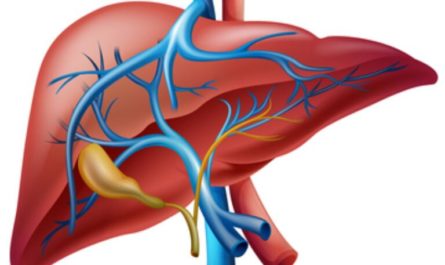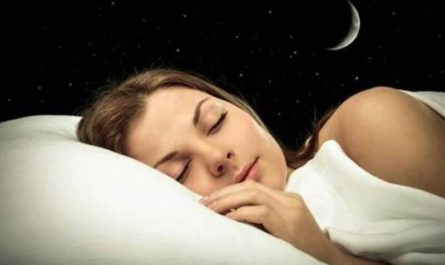Styes on the eyelid can be quite uncomfortable and unsightly. These painful red bumps are usually caused by a bacterial infection in the oil glands of the eyelid. While medical treatment is available, there are also several natural remedies that can help alleviate the symptoms and promote healing. This article will explore 14 natural remedies for stye on the eyelid that are safe, effective, and easy to implement.
Understanding Styes on the Eyelid
A stye, also known as a hordeolum, is a common eyelid infection that results in a painful bump or lump on the eyelid. It occurs when the oil glands (meibomian glands) or the sweat glands (glands of Zeis) at the base of the eyelashes become infected.
A stye typically starts as a small bump and gradually develops into a pimple-like swelling. It may cause pain, tenderness, redness, and swelling in the affected area. Styes are usually not serious and can be treated at home with natural remedies or resolved on their own within a week or two.

What Causes Stye on Eyelid?
The primary cause of a stye is usually a bacterial infection, commonly due to the Staphylococcus aureus bacteria. Several factors can increase the risk of developing a stye:
- Poor eyelid hygiene: Failure to maintain proper eyelid hygiene, such as not washing the eyelids regularly, can lead to the accumulation of bacteria and debris, increasing the chances of infection.
- Rubbing or touching the eyes: Frequent rubbing or touching of the eyes with dirty hands can introduce bacteria to the eyelid area.
- Makeup or cosmetic use: Using expired or contaminated eye makeup, such as mascara or eyeliner, can introduce bacteria to the eyelid and increase the risk of infection.
- Contact lenses: Wearing contact lenses, especially if not properly cleaned and maintained, can contribute to developing a stye.
- Meibomian gland dysfunction: Dysfunction of the meibomian glands, which produce the oil that helps lubricate the eye, can lead to blockages and increase the risk of stye formation.
- Weakened immune system: Individuals with weakened immune systems, such as those with diabetes or other chronic health conditions, may be more susceptible to stye formation.
14 Natural Remedies for Stye on Eyelid
1. Warm Compress
Applying a warm compress to the affected area increases blood circulation, which helps in the healing process by promoting drainage and reducing inflammation.
- Boil some water and allow it to cool until it is warm but comfortable to touch.
- Soak a clean cloth or cotton pad in the warm water.
- Gently squeeze out the excess water and place the warm compress on the stye.
- Hold the compress against the stye for 10 to 15 minutes.
- Repeat this process several times a day until the stye drains and heals.
2. Tea Tree Oil

Tea tree oil possesses natural antibacterial properties, which can help eliminate the bacteria causing the stye and reduce inflammation.
- Dilute a few drops of tea tree oil in a carrier oil like coconut or olive oil.
- Dip a clean cotton swab into the diluted oil mixture.
- Gently apply the swab to the stye, making sure to avoid getting the oil into the eye.
- Leave it on for 15 to 20 minutes.
- Repeat this process two to three times a day until the stye improves.
3. Aloe Vera
Aloe vera has soothing and anti-inflammatory properties that can help reduce the pain and inflammation associated with styes.
- Extract fresh aloe vera gel from an aloe leaf.
- Apply the gel directly to the stye.
- Leave it on for 15 to 20 minutes.
- Rinse it off gently with warm water.
- Repeat this process two to three times a day for optimal results.
4. Turmeric
Turmeric is a natural antiseptic and anti-inflammatory spice that can help treat styes effectively.
- Mix a teaspoon of turmeric powder with a small amount of water to create a paste.
- Apply the paste to the stye.
- Leave it on for 15 to 20 minutes.
- Rinse it off gently with warm water.
- Repeat this remedy twice a day until the stye improves.
5. Coconut Oil
Coconut oil contains lauric acid, which has antimicrobial properties to help fight the bacteria causing the stye.
- Take a small amount of coconut oil on your fingertips.
- Gently massage the oil onto the stye.
- Leave it on for a few hours or overnight.
- Repeat this process daily until the stye resolves.
6. Apple Cider Vinegar
Apple cider vinegar has antibacterial properties that can help eliminate the infection causing the stye.
- Mix equal parts of raw, unfiltered apple cider vinegar and water.
- Soak a cotton ball in the solution.
- Apply the soaked cotton ball to the stye for a few minutes.
- Rinse it off with warm water.
- Repeat this remedy two to three times a day until the stye improves.
7. Chamomile

Chamomile has soothing and anti-inflammatory properties that can relieve the pain and swelling of a stye.
- Steep a chamomile tea bag in hot water for a few minutes.
- Allow it to cool down.
- Place the tea bag on the stye for 10 to 15 minutes.
- Repeat this process two to three times a day until the stye heals.
8. Castor Oil
Castor oil has antibacterial properties and can help reduce inflammation.
- Take a small amount of castor oil on a clean cotton swab.
- Gently apply the oil to the stye.
- Leave it on overnight.
- Rinse it off in the morning.
- Repeat this process daily until the stye improves.
9. Potatoes
Potatoes have anti-inflammatory properties and can help reduce swelling and pain associated with styes.
- Grate a raw potato and place the grated potato on a clean cloth.
- Apply the cloth to the stye for 10 to 15 minutes.
- Repeat this process several times a day until the stye improves.
10. Green Tea
Green tea contains antioxidants and antibacterial compounds that can help fight infection and reduce inflammation.
- Steep a green tea bag in hot water for a few minutes.
- Allow it to cool down.
- Place the tea bag on the stye for 10 to 15 minutes.
- Repeat this process two to three times a day until the stye heals.
11. Warm Saline Solution
A warm saline solution can help cleanse the stye and promote healing.
- Mix a teaspoon of salt in a cup of warm water until it dissolves completely.
- Soak a clean cotton ball in the solution.
- Gently clean the stye with the soaked cotton ball.
- Repeat this process two to three times a day until the stye improves.
12. Epsom Salt

Epsom salt can help reduce inflammation and relieve pain associated with styes.
- Dissolve a teaspoon of Epsom salt in a cup of warm water.
- Soak a clean cloth in the solution.
- Gently apply the cloth to the stye for 10 to 15 minutes.
- Repeat this process two to three times a day until the stye improves.
13. Goldenseal
Goldenseal is a herb known for its antimicrobial properties. It can help fight the infection causing the stye and promote healing.
- Mix a few drops of goldenseal tincture in a cup of warm water.
- Use a clean cotton ball to apply the solution to the stye.
- Repeat this process two to three times a day until the stye heals.
14. Proper Hygiene
Maintaining proper hygiene is crucial for preventing and treating styes.
- Avoid touching or rubbing your eyes, as it can spread the infection.
- Clean your eyelids gently with a mild cleanser or baby shampoo to remove any debris or bacteria.
- Wash your hands thoroughly before touching your eyes.
How to Prevent Styes on the Eyelid?
To help prevent styes on the eyelid, you can follow these guidelines:
- Maintain good eyelid hygiene: Clean your eyelids regularly to remove excess oil, dirt, and bacteria. Use a mild, tear-free cleanser or baby shampoo mixed with warm water. Gently scrub the base of your eyelashes with clean fingertips or a cotton swab, then rinse thoroughly.
- Avoid touching or rubbing your eyes: Touching your eyes with unwashed hands can introduce bacteria to the eyelid area. Avoid rubbing your eyes excessively, as this can irritate the glands and increase the risk of infection.
- Replace eye makeup regularly: Makeup, especially mascara, and eyeliner, can harbor bacteria over time. Replace your eye makeup every few months, and avoid sharing makeup with others. Remove makeup before sleeping to allow your eyelids to breathe.
- Avoid sharing personal items: Do not share items that come into contact with your eyes, such as towels, washcloths, or eye cosmetics. Sharing these items can spread bacteria and increase the risk of infection.
- Be cautious with cosmetic procedures: If you undergo cosmetic procedures around the eyes, ensure that proper sterile techniques are followed to minimize the risk of infection.
- Manage underlying conditions: If you have underlying conditions like blepharitis or meibomian gland dysfunction, work with your eye care professional to manage them effectively. Treating these conditions can help prevent styes from developing.
- Strengthen your immune system: Maintain a healthy lifestyle by eating a balanced diet, exercising regularly, getting enough sleep, and managing stress. A strong immune system can help prevent infections, including styes.
Related Questions
1. Can you pop a stye on the eyelid?
Don’t touch, squeeze, or pop a stye. It can seem tempting, but popping will release pus and spread the infection. If the stye is internal, ask your doctor for professional drainage.
2. What does a stye on the eyelid look like?
Styes look a lot like regular pimples. They’re usually red with a white head and appear near the edge of the eyelid. However, they can also form on the inside of the eyelid. In most cases, styes vanish within a week or two without treatment. If your stye is filled with blood, see a doctor.
3. Is stye on the eyelid contagious?
Styes are typically not contagious, but the bacteria causing them can spread to other areas of your body or other people. Practice good hygiene to minimize the risk of spreading the infection.
4. How long does it take for a stye to go away?
Styes usually go away on their own within one to two weeks. However, with the use of natural remedies and proper care, you can speed up the healing process.
5. Can I wear makeup while having a stye?
It is advisable to avoid wearing makeup while you have a stye as it can further irritate the affected area and delay the healing process. Once the stye has resolved, make sure to replace any makeup products that may have come into contact with the infected eye.
6. When should I see a doctor for a stye?
Most styes can be treated at home with natural remedies. However, if the stye does not improve within two weeks, becomes increasingly painful, or affects your vision, it is recommended to consult a healthcare professional.
Conclusion
A stye on the eyelid can be a very uncomfortable and painful experience. It is essential to seek medical attention if home remedies do not improve symptoms. With proper diagnosis and treatment, a stye can be effectively treated. Following the tips outlined in this blog can help prevent a stye on your eyelid.






